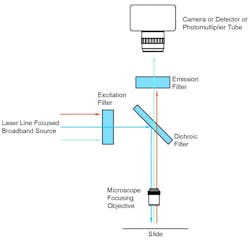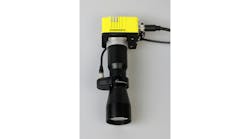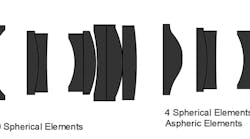Illuminating Samples
Fluorescence microscopy is a powerful imaging technique widely used in various fields, especially in biomedical research, to visualize and study fluorescently labeled samples at the microscopic level. It relies on the phenomenon of fluorescence, where certain materials absorb light at a specific wavelength (excitation light) and then emit light at a longer wavelength (emission wavelength). This emitted light can be captured and used to form images of the sample.
At the core of fluorescence microscopy is the ability to selectively excite the fluorescent molecules within the sample. To achieve this, a focused and diffraction-limited light source, such as a laser, is used to illuminate the sample. The excitation light is typically directed into the microscope through an excitation filter, which ensures that only light of the appropriate wavelength reaches the sample.
As the excitation light interacts with the sample, certain molecules within the sample become excited and enter a higher energy state. Shortly after excitation, these molecules release the excess energy in the form of fluorescence emission at longer wavelengths. The emitted light carries valuable information about the sample’s structure and composition.
To separate the emitted fluorescence from the excitation light and other background noise, a dichroic mirror or beam splitter is employed. This optical element allows the passage of the emitted light while reflecting the excitation light and any scattered laser light away from the detection path. The use of this dichroic mirror ensures that only the relevant fluorescence signal reaches the detector.
The fluorescence emitted by the sample is collected by the objective lens of the microscope and directed towards the detector, often a photodetector or a camera. The detector measures the intensity of the emitted fluorescence, and this data is then processed to generate fluorescence images of the sample.
Advantages of fluorescence microscopy
One of the significant advantages of fluorescence microscopy is its ability to selectively label specific structures or molecules within the sample using fluorescent dyes or markers. These dyes can be introduced during sample preparation, allowing researchers to target specific components of interest. This technique enables the visualization of individual molecules, making it valuable in studying single-molecule interactions and dynamics.
In conventional widefield fluorescence microscopy, all the fluorescence emitted from the sample is captured, which can lead to blurred images, especially from regions outside the focal plane. To overcome this limitation, confocal fluorescence microscopy is often employed. In a confocal setup, the emitted fluorescence from the focal plane is imaged onto a pinhole, which eliminates light coming from other regions of the sample. This results in improved depth resolution and enables the imaging of relatively thick samples.
The fluorescence microscope is typically controlled by a computer, allowing for automated image acquisition, processing, and storage. This automation facilitates the collection of large datasets and enables the analysis of dynamic processes, such as live cell imaging.
Despite the numerous advantages of fluorescence microscopy, there are some challenges associated with this technique. The emitted fluorescence signal is often much weaker than the intense excitation light, necessitating the use of sensitive detectors to capture these faint signals accurately. Additionally, the spectral separation between the excitation and emission wavelengths may not be very large, requiring precise optical filters to eliminate unwanted background noise.
In conclusion, fluorescence microscopy is a powerful and versatile imaging technique that has revolutionized various fields of research, particularly in the life sciences. By exploiting the fluorescence emitted by specific molecules within a sample, researchers can visualize and study cellular structures and processes at high resolution. With ongoing advancements in technology and the development of new fluorescent probes, fluorescence microscopy continues to play a crucial role in advancing our understanding of biological systems.
For other articles on Fluorescence Microscopy, please click here
Fluorescence Microscopy Part 2 : Customizing Filters and Lenses





